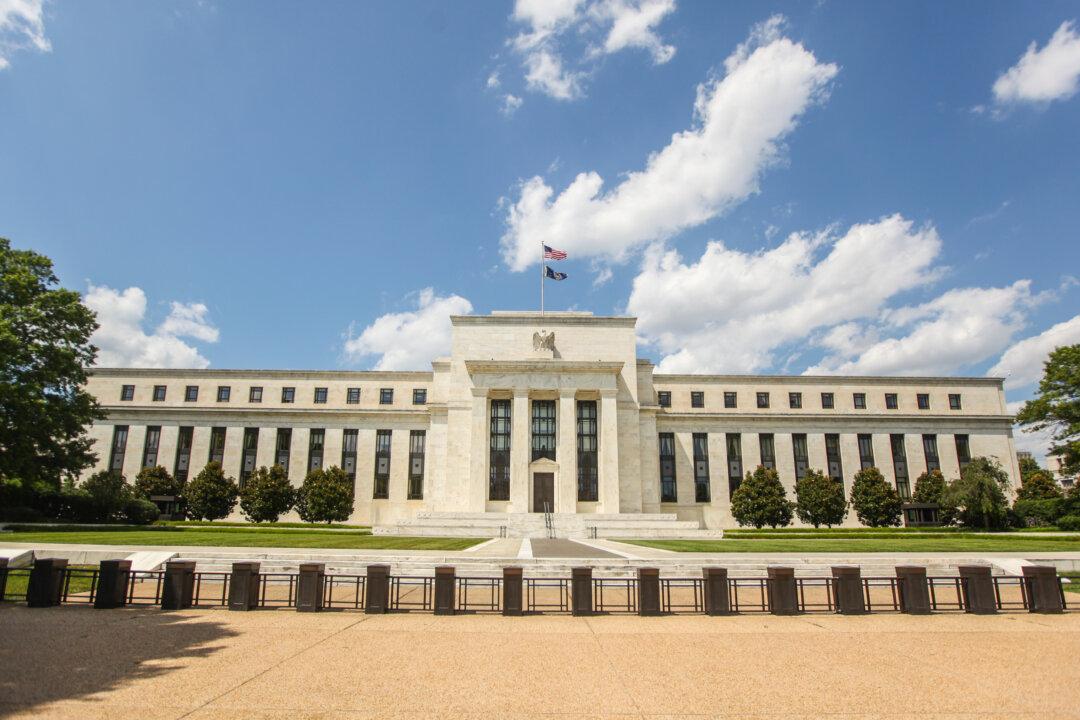The record highs set by the Dow Jones Industrial Average in the first week of March—closing at 14,296.24 on March 6—should be a sign that things are getting better. But while many are celebrating the 9 percent year-to-date return and the retaking of highs not seen since 2007, veteran traders and hedge fund managers say that the recent performance is not as good as it looks and risks remain.
For starters, adjusted for inflation, the recent peak is not a record. According to CPI data from the Bureau of Labor Statistics, the all-time high of 14,164 in 2007 would really be equivalent to 15,731 today.
That does not prevent former Secretary of the Treasury Robert Rubin from expressing confidence in the economy in a recent speech in New York. “One country that I would invest in long term is the United States,” he said, but then added a caveat.
“There has been a tremendous flood of money into stocks. [However] If the psychology changes, people would move out of risky assets into treasury bills.”
Despite the record close of the Dow Jones, the stock market and economy in 2013 is very different and much more complicated compared to 2007. Bulls say valuations are cheap and corporate earnings are high. Rising stock prices positively influence the consumer and therefore the economy through the “wealth effect.” On top of that, there is the Federal Reserve, which is flooding the market with liquidity and “has got everyone’s back.”
Bears point out that longer-term indicators signal overvaluation and risk taking is at extreme levels, not seen since past market tops. They say that money printing by the Fed as well as government deficit spending can have disastrous consequences. They also claim that real economic activity remains subdued, because of high unemployment and stealth inflation taking purchasing power away from the consumer.
Corporate Earnings Strong but Trend Is Turning
“The beauty of stocks is that the earnings go up every year. Stocks should go up. Given the discrepancy there is a lot more potential for the stock market to rise,” hedge fund manager John Paulson said in a recent New York speech.
It is true that corporate earnings have risen strongly since the market bottom of March 2009 and are currently at all-time highs according to research by JP Morgan. The problem is that analysts are systematically cutting their earnings expectations for the first quarter of 2013.
“Once again this year’s earnings expectations are being lowered,” writes JP Morgan. Furthermore, 29 percent of companies in the S&P 500 that gave an indication of this year’s sales reduced their growth outlook.
The S&P 500, which includes 500 large cap stocks, is more representative than the 30-stock Dow and often used to analyze aggregate stock market metrics. It has not managed to reclaim its 2007 high of 1,561.80 so far.
When looking at the popular valuation metric of comparing the S&P 500 price to its aggregate earnings, the market does not look to be expensive. According to FactSet, the current S&P 500 level of 1,541 represents 13.6 times the expected full-year earnings for 2013, below the long run average of 15.
Another more sophisticated and long-term valuation metrics paints another picture. The Shiller P/E ratio, which takes a 10-year average of earnings and adjusts them for inflation, trades at 32 percent above the long run average. Historically, at a ratio of 24.4, subsequent stock returns over 10 years were negative.
Fed True Driver of Stock Market
“Everything has to be put into context,” says market veteran Victor Sperandeo about the stock market performance. He thinks the unprecedented lax monetary policy by the Fed has propelled markets up.
“Zero interest rates for four years, three-and-a-half years into a recovery and then the Fed has done QE1, QE2, QE3 and two Operations Twist. What would happen if there was no Fed? We'd be in collapse. Now the Fed is buying $85 billion per month.”
Fed Chairman Ben Bernanke has repeatedly stated that his monetary policy supports asset prices such as housing and stocks. In turn, he hoped that consumers would use their renewed wealth and spend it on goods and services—John Paulson agrees.
“If the stock market goes up you create real money. The more the market goes up the more they [the consumers] tap the gains and that contributes to growth,” said Paulson. Consumer spending and GDP growth have remained lackluster, however.
This wealth effect does not necessary work in practice, thinks Richard Howard of Hayman Capital. “I think they are putting the cart before the horse what they really need to focus on is income,” he says.
Ultimately assets can only appreciate in a sustainable fashion if you have growth in income that is needed to either pay for an asset outright or service the debt on a mortgage, for example.
“You can’t have a positive asset appreciation cycle without it being supported by a growth in income, otherwise you are creating this bubble,” Howard says, citing the previous housing bubble and the current expansion of student debt as examples. He says there is lackluster consumer spending because the labor share of GDP is at a 40-year low.
Inflationary Fed Policy Reduces Real Market Value
Rubin, Paulson, Howard, and Sperandeo all say that the Fed’s policy will result in inflation in the future.
“I believe if you print more dollars, ultimately those dollars will become worth less. I essentially shifted the denomination of my investments from dollars to gold,” says Paulson.
In fact, despite gold’s recent weakness, the Dow Jones lost 50 percent of its value compared to the precious metal since 2007, not including yearly dividends. While Paulson’s methodology is not widely accepted, a more general adjustment for consumer price inflation leads to similar results.
The Epoch Times publishes in 35 countries and in 21 languages. Subscribe to our e-newsletter.




